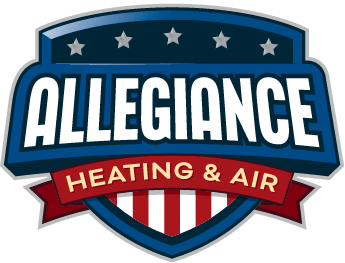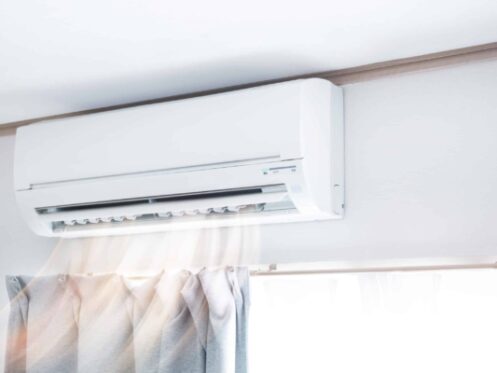Energy efficiency is an extremely important factor when installing or replacing any HVAC unit such as a gas furnace, air conditioner or heat pump. The US Federal Government mandates that all new HVAC units must meet certain energy efficiency standards in order to help reduce the country’s total energy consumption. These standards vary depending on the type of HVAC unit, and some of the minimum standards are also different depending on where you live. Today we’re going to focus on these energy efficiency standards and also how the energy efficiency of different HVAC units is determined so that you can make a more informed decision when choosing your new HVAC unit.
Air Conditioner Energy Efficiency Standards
The US Department of Energy (DoE) is responsible for setting the energy efficiency standards for all HVAC units. When setting the minimum energy efficiency standards for air conditioning equipment, the DoE splits the country up into three regions based on climate: Southwest, Southeast and North. The energy efficiency standard for AC units is slightly higher in the Southwest and Southeast regions since these areas tend to be hotter than the North region.
Indiana is in the North while Kentucky is in the Southwest, which means that the minimum standard your new AC unit needs to meet depends on which side of the border you live on. In the North region, all new air conditioners must be at least 14 SEER, while all new AC units in the Southwest must be at least 15 SEER. These same standards also apply to new ductless mini-split AC systems.
SEER stands for Seasonal Energy Efficiency Ratio, which is a metric that expresses how much total electricity a unit consumes compared to its total cooling output in BTUs (British Thermal Units). SEER ratings are one of the most important things to focus on when choosing a new AC unit. The SEER rating of your new AC unit will be one of the main factors that determine how much you pay for air conditioning each year. The other important factors are heat and humidity as all AC units work less efficiently in hotter or more humid conditions. As such, the unit won’t cool as quickly on hot or humid days, which means it will need to work harder, run longer and consume more electricity.
As the SEER number increases, so does the energy efficiency. Each higher SEER value corresponds to an approximately 7% improvement in energy efficiency, i.e. a 15 SEER unit will use around 7% less energy than a 14 SEER unit. As of writing, the most energy-efficient AC units currently available are rated at 28 SEER. If you were to opt for a 28 SEER unit, your electricity costs would be half as much as they would with a 14 SEER unit.
One important thing to understand about SEER is that it measures the average efficiency of an AC unit over the entire summer. The reason for this is that energy efficiency and electricity consumption varies quite a bit based on the outdoor air temperature and humidity level. Air conditioning equipment works most efficiently when the outdoor temperature is no more than 10 to 20 degrees higher than the desired indoor temperature.
SEER ratings take this into account as they are determined by testing the unit in a wide range of weather conditions to see how quickly it cools and thus how efficiently it works and how much electricity it typically consumes. These tests then allow researchers to estimate approximately how much total electricity the AC unit will use during a typical cooling season from late spring to early fall.
Heat Pump Energy Efficiency Standards
Heat pumps can provide both cooling and heating, which means that they must meet two different energy efficiency standards. Just as with standard central AC units, any new heat pump must have an energy-efficiency rating of at least 14 SEER or 15 SEER depending on whether you live in Indiana or Kentucky.
The energy efficiency of a heat pump when heating is measured using a metric known as Heating Seasonal Performance Factor (HSPF). HSPF is a ratio of a heat pump’s total heating output in BTUs compared to the total electricity consumption during a normal heating season. Again, the higher the HSPF rating, the more efficient the unit is.
The minimum HSPF standards are the same for all three regions. The minimum standard heating efficiency for all new heat pumps is 8.8 HSPF. This same standard also applies to any ductless mini-split systems that can both cool and heat. The standard was previously only 8.2 HSPF up until the start of 2023. Compared to an old 8.2 HSPF heat pump, a new unit with an HSPF rating of 9 will use approximately 23% less energy. Some heat pumps are rated as high as 13.5 HSPF, and a unit with this rating could potentially save you more than $500 a year in heating costs.
As with SEER ratings, HSPF is calculated by seeing how effectively and how efficiently a heat pump heats under different conditions. This is again because the heating effectiveness can vary depending on how cold it is outside. Heat pumps always perform best and work most efficiently when the outdoor air temperature is around 40 degrees or higher.
Cold-climate heat pumps can continue functioning in temperatures well below 0 degrees. This is because cold-climate heat pumps usually have electric heat strips inside the unit that will help to raise the refrigerant temperature so that the unit can continue heating effectively in freezing conditions. The only issue is that the heat strips cause the unit to consume much more electricity, which is why most people in colder climates always have some other backup heating option such as a gas furnace or electric baseboard heaters.
Furnace Energy Efficiency Standards
Annual Fuel Utilization Efficiency (AFUE) is the metric used to measure the energy efficiency of gas furnaces. AFUE is a scale that technically goes from 0-100%. However, the minimum efficiency standard for all gas furnaces in the US is 80 AFUE, and the most efficient units currently available go up to 98.7 AFUE.
AFUE is fairly easy to understand compared to SEER and HSPF. With an 80 AFUE furnace, 80% of the gas it burns is used to provide heating. The other 20% of the energy is wasted due to the heat energy that remains in the combustion fumes when they exit the furnace and flow out of the house through the furnace flue.
Any furnace that is rated at 90 AFUE or higher is considered a high-efficiency furnace. High-efficiency furnaces are condensing units that have both a primary heat exchanger and a secondary heat exchanger. The secondary heat exchanger functions to capture most of the remaining heat energy in the combustion fumes after they exit the primary heat exchanger and before they flow out into the flue.
Capturing most of the heat energy from the fumes becoming cold enough that condensation forms inside the furnace, hence the name condensing furnace. This condensation is why all condensing furnaces must have a drain system that captures all of the water that forms and transports the water away from the furnace.
Understanding how much money you can save on heating costs with a higher AFUE furnace is also extremely easy. Let’s say that your current furnace is 80 AFUE. In this case, for every dollar you spend on gas, 80% of it goes into heating your home. If you had a 90 AFUE furnace, your heating costs would be reduced by 10% since that unit would result in 90% of every dollar spent on gas going directly into heating your home.
Allegiance Heating & Air, LLC is one of the area’s top-rated HVAC companies specializing in heating and cooling installation. We offer an extensive range of new residential and commercial furnaces and air conditioners, and our team can help you to determine which energy efficiency rating is best for your new unit.
We are located in Greenville and serve customers in both Southern Indiana and the Louisville area so contact us today for all of your HVAC installation needs.




